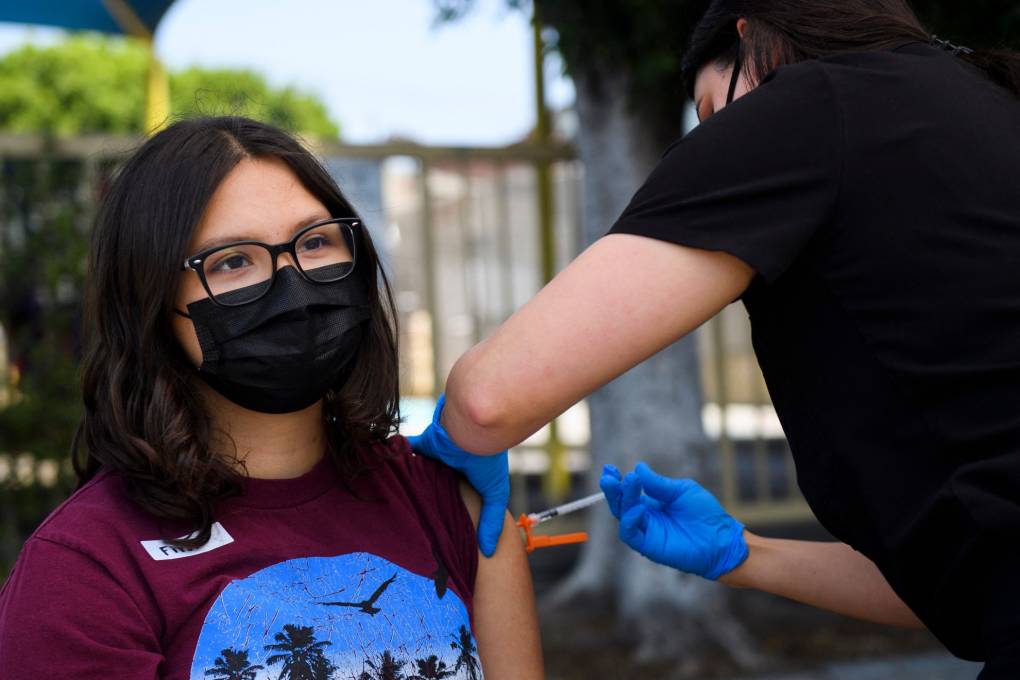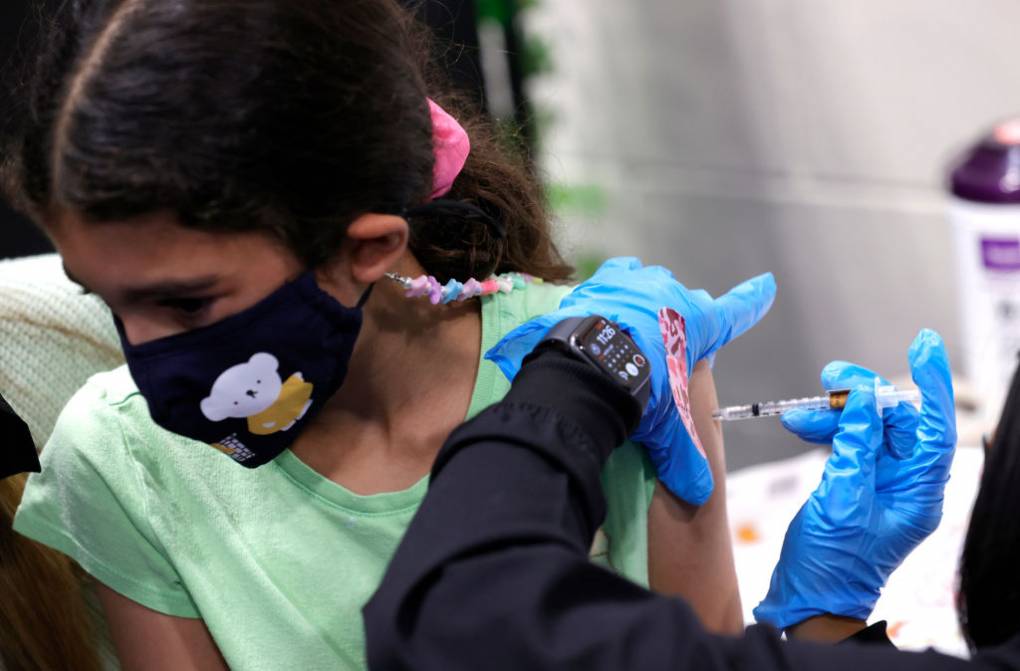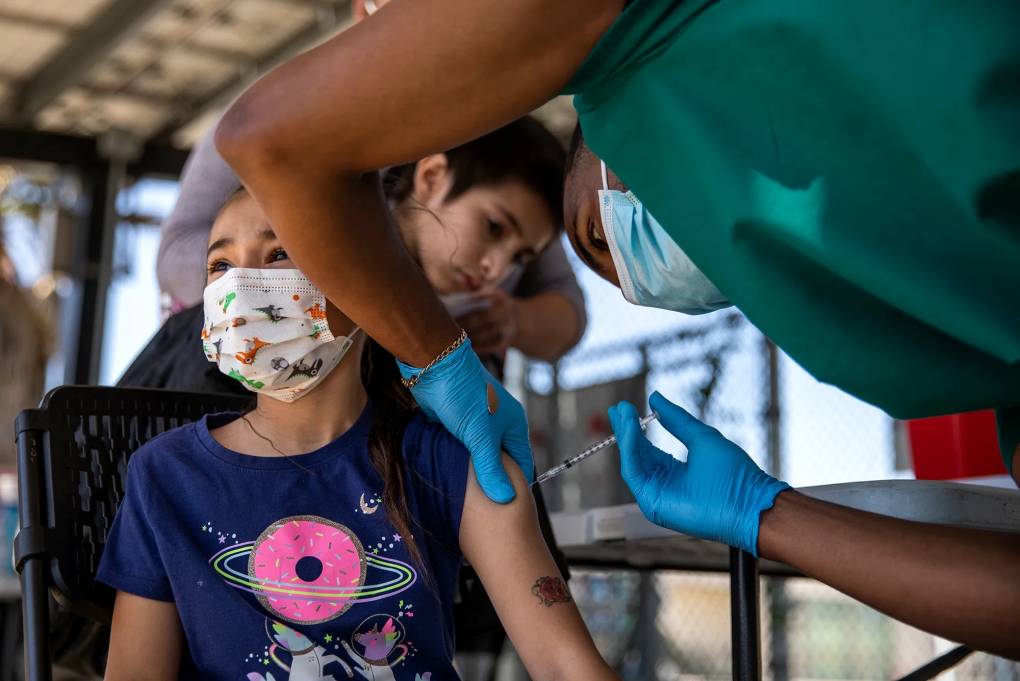Growing vaccine hesitancy since the COVID-19 pandemic began may be another reason for the decline in the state’s vaccination rate.
“Looking at the nationwide sentiment when it comes to vaccinations, there appears to be a slight uptick in vaccine hesitancy,” Dang said. “Some of the hesitancy from the COVID vaccine is bleeding over to the other vaccinations.”
Martin agreed, saying, “I think there are some parents who may have given it a second thought, when they had not in the past.”
In Placerville, a limited supply of vaccines at doctors’ offices and pharmacies is keeping students from getting needed vaccinations, said Eric Bonniksen, superintendent of the Placerville Union School District. There are other districts in the state that are also having supply problems, Bonniksen said.
“We had families having to make appointments three to six weeks out because none of our providers have any on hand and the deliveries are coming in very slow,” he said.
In Orange County, some parents are submitting homeopathic vaccine records to school clerks as proof of vaccination, said Pamela Kahn, coordinator for health and wellness for the Orange County Department of Education. These do not meet the state requirement, she said.
Although some school front office staff, unsure whether to accept the records, have asked for guidance, others did not and accepted the records, Kahn said.
School leaders can allay parents’ fears over vaccines by hosting informational sessions on vaccinations, sending vaccine information home or giving parents access to trusted professionals, like nurses and doctors, who can speak to them about their concerns, Dang said.
Most school districts hold vaccination clinics to help families get children up to date on their immunizations. Some have even offered prizes or other incentives to get it done, Martin said.
Families who don’t want to vaccinate have a few options
Parents who do not want to vaccinate their children can obtain a medical exemption or have their children evaluated and enrolled in special education services if they want them to stay on campus. They can also homeschool them or enroll them in an independent study program without classroom instruction.
Students with some required vaccinations can be admitted to school conditionally until they get caught up on all their vaccinations, but students without at least one dose of polio; diphtheria, tetanus and pertussis; measles; hepatitis B; and varicella (chicken pox) vaccinations are not permitted to attend school on campuses.
Students enrolled conditionally must adhere to Centers for Disease Control and Prevention catchup schedules, while unhoused students must receive all required immunizations as soon as possible after beginning school.
This year San Juan Unified, which serves 39,442 students in Sacramento County, excluded 55 students from classroom instruction at the beginning of the school year because they lacked the required vaccinations. The students and their families had been contacted regularly by school officials and the district’s health service office and offered immunization resources, according to Raj Rai, director of communications for the district.
Health and attendance clerks at each school in the district track students who are enrolled conditionally to ensure they are getting immunizations in accordance with state catchup schedules, Rai said. Currently, the district has 411 students enrolled conditionally.
San Diego Unified officials weren’t sure last week how many of their students would have to be excluded from school when classes began this week. But Susan Barndollar, executive director of nursing and wellness for the district, thinks a year is enough time for families to have caught up on required immunizations.
“We are notifying people as we speak,” she said.
To ensure all students can enroll in school, the district held vaccination clinics themselves and with community partners. District staff members are also helping families to connect with medical providers. San Diego Unified has held parent meetings on Zoom featuring medical professionals who answered questions about many health issues, including vaccinations.
Barndollar doesn’t think there has been a lot of vaccine hesitancy among district families. The district lost only 20 students after the 2015 law passed making it more difficult to get a medical waiver to avoid vaccinations, she said.
“We encourage everyone to go to the California Department of Public Health website, go to your family doctor or your school health clinic to get information,” she said. “We encourage people to talk. They can tell us where they are getting their information, and then we can help.”
The decline in California’s vaccination rate follows years of improved vaccination rates for children after state laws were passed that require students to be vaccinated against certain diseases to attend schools and child care centers.
Schools and licensed child care centers are required to enforce immunization requirements, maintain the immunization records of all children enrolled and report students’ immunization status to the California Department of Public Health. Schools are audited by the state regularly. Those who don’t comply with state law are required to pay back the average daily attendance funding they received for children who were not vaccinated or enrolled conditionally, Barndollar said.
Some students missed vaccine checkpoints during distance learning
Some districts didn’t enforce vaccination requirements when schools were shut down during the pandemic, meaning some students may have missed a vaccination checkpoint. This could potentially allow some students to avoid vaccinations for as long as six years.
“That has been a huge concern for advocates and school nurses,” Martin said.
San Diego Unified did track vaccinations when their schools closed in 2020. School nurses sent out reminders about vaccination mandates and deadlines. When schools reopened, San Diego Unified didn’t just check the vaccination records at the usual checkpoints; they also checked the records of any student who had not attended school on a campus, even if they had attended virtually.
Los Angeles Unified, the state’s largest school district, had 91.9% of its students fully vaccinated as of August 24. In a district with 430,000 students, that means that more than 30,000 students may not have all their vaccinations.
“Our nursing department continues to diligently track and monitor immunization rates and encourages compliance,” said a district spokesperson. “Per California law, students cannot enroll if they are not compliant. If they are noncompliant, they are given a notification of what immunizations are due, with a 10-day grace period to get the missing vaccines. We continue to closely monitor this issue and work with families to get to a 100% compliance rate.”
Vaccine rates aren’t falling in all districts
Despite the overall bad news about declining vaccinations, some districts have managed to keep vaccination rates high.
In the tiny Konocti Unified School District in Lake County, where 99% of the 3,600 students in the district are fully vaccinated this school year, Chris Schoeneman, assistant superintendent, hasn’t seen much resistance from parents to vaccinations.
“We do not allow students to start unless they have been immunized,” he said. “That line in the sand is important. Most of the time the main issue is parents making it a priority and then, when we make it a priority for them, they get on board quickly and easily.”
The district’s nursing staff and a local hospital also host a Saturday immunization clinic to help catch students up on their vaccinations.
It is important to protect children from diseases like measles and polio, traces of which have shown up in wastewater in New York and Great Britain, Martin said. California’s last large measles outbreak in 2015 was largely among unvaccinated individuals, she said.
“These diseases are still with us,” she said. “We haven’t eradicated these diseases. We were close, but we did not.”
The best way parents can keep their children safe from diseases is to make sure they are current on their immunizations and have their regular wellness checkups, Martin said.
Ninety-five percent of children at a school must be immunized to prevent transmission of disease in a community, according to the state Department of Public Health.
“I think it is important that we get our parents on board for these childhood vaccines,” Dang said. “We have been using them for many, many years, and they have been working.”



